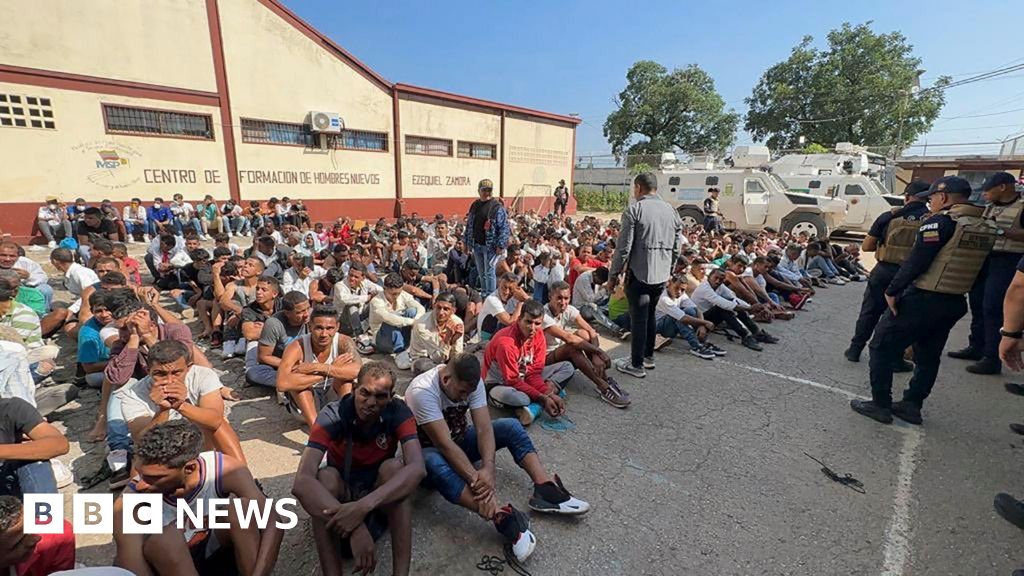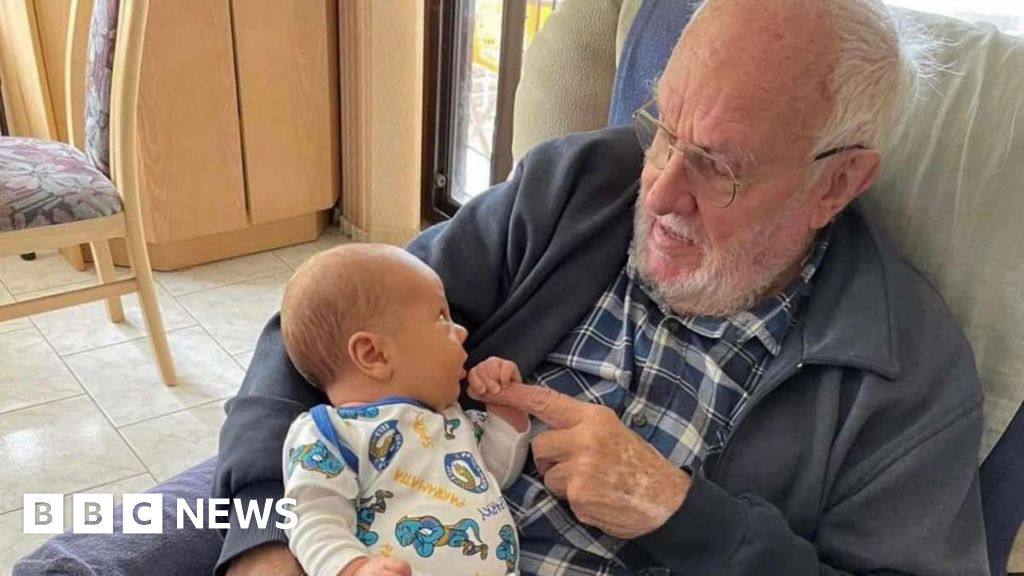Tuesday, Oct. 28, 2025 | 2 a.m.
Editor’s note: “Behind the News” is the product of Sun staff assisted by the Sun’s AI lab, which includes a variety of tools such as Anthropic’s Claude, Perplexity AI, Google Gemini and ChatGPT.
Supplemental Nutrition Assistance Program benefits will expire Saturday for millions of Americans across the nation due to the ongoing federal government shutdown. This unprecedented crisis threatens to leave approximately 42 million people — including children, seniors and disabled individuals — without access to food assistance.
The cutoff represents the first time in the program’s history that benefits will be completely halted on a national scale, creating a humanitarian emergency that will ripple through communities, strain food banks, impact local economies and potentially trigger widespread health consequences.
For Nevada alone, this means $90 million in monthly food assistance for nearly half a million residents will vanish, leaving families to face impossible choices between paying rent, buying medicine or putting food on the table.
Nevada’s SNAP crisis
Nevada issues approximately $90 million in total SNAP benefit dollars each month to its residents [1]. This funds food assistance for roughly 495,000 people, representing about 15.5% of the state’s population. These monthly federal benefits are essential for low-income families, seniors and children, and play a critical role in supporting food security statewide [1].
The distribution of SNAP benefits varies significantly by county:
- Clark County: The largest SNAP population in Nevada with over 409,000 recipients as of January, according to the USDA[2].
- Washoe County: The second-highest SNAP population in the state with over 52,000 recipients [2].
- Carson City, Elko, Nye and Douglas counties: These have smaller SNAP populations, with most receiving under $5 million each per month in benefits [1].
The bulk of the $90 million in SNAP dollars for Nevadans flow through Clark County due to its large population size and SNAP enrollment. This breakdown highlights the critical dependence of urban and metropolitan areas in Nevada on SNAP benefits to address food insecurity [3].
Impact on food banks
Food banks across Nevada, particularly Three Square in Southern Nevada (the state’s largest, which distributed over 41 million meals last year), are bracing for a significant surge in demand if SNAP payments stop or are disrupted [4]. These organizations report increasing need even before any shutdown-related cutoff, as inflation, federal SNAP cuts and pandemic aid reductions have already put strain on their operations.
Without SNAP, food banks will face greater pressure and may not be able to meet the needs of the hundreds of thousands of additional people who suddenly lack money for groceries. Emergency measures, like the recent approval of $7.3 million in state funds for The Nevada Special Supplemental Nutrition Program for Women, Infants and Children (WIC), show Nevada is trying to ease the impact, but food banks do not have the resources to replace full federal SNAP benefits [4].
The state has proactively sought emergency funding for supplemental nutrition programs, but SNAP remains entirely federally funded; no state or local aid can fully fill the gap if the shutdown continues [1].
Lawmakers for both parties push for restoring benefits
Both Republican and Democratic officials are voicing urgent concern about the impending SNAP halt. Republicans point to a political impasse, blaming Senate Democrats for not ending the shutdown, while Democrats accuse the Trump administration of refusing to use available contingency funds and of endangering families through inflexible policy decisions [5]. Lawmakers from both parties agree that a halt would create a humanitarian crisis for roughly 42 million Americans, including large numbers of children, elderly and disabled individuals who rely heavily on this food aid for their basic nutrition.
Why won’t the USDA use contingency funds?
The USDA has clarified that its roughly $5 billion contingency fund is legally reserved for emergencies — such as natural disasters — not for covering regular benefits during a shutdown when federal appropriations have lapsed [6]. The agency argues that tapping these reserves for normal monthly SNAP payouts would violate federal law and leave the program with insufficient resources for urgent disaster response situations. Advocacy groups and Democratic lawmakers dispute this interpretation and say the funds should be used to prevent immediate hunger and hardship.
What can states do?
States have very limited ability to compensate for lost federal SNAP benefits. Some are trying to allocate emergency funds to keep assistance flowing, and states like California and Louisiana are using state money and mobilizing food banks or National Guard troops for food distribution. However, these measures are temporary and insufficient for fully replacing federal SNAP funding, which totals billions of dollars each month. Federal policy also says states won’t be reimbursed for these emergency expenditures if the shutdown ends[7].
Will residents be left to starve?
While charities and local governments may ramp up food distribution, there is no realistic way to meet the needs of all families suddenly cut off from SNAP [8]. Food banks are already strained and expect unprecedented demand as families exhaust their own food reserves. While mass starvation is unlikely in the short term, food insecurity, skipped meals and nutritional deficits will quickly accelerate — especially in communities with few resources.
Long-term effects and strain on vulnerable populations
The loss of SNAP benefits will:
- Increase hunger and food insecurity, especially among children, seniors and individuals with disabilities [7].
- Create additional stress and hardship for already at-risk households, forcing people to make untenable choices between food, rent and health care.
- Lead to a spike in community demand for food banks and meal programs, many of which already lack adequate funding [9].
- Decrease spending at grocery stores, hurting local economies and retail food outlets, which rely heavily on SNAP spending for revenue [8].
Have SNAP funds ever been frozen before?
Nationally, there has never been a full, sustained suspension of SNAP payments in the program’s history as extreme as what is now projected for November. Even during major government shutdowns, SNAP benefits were always continued through contingency funding or by quickly passing emergency appropriations before a nationwide freeze could occur. Past disruptions have occurred on a much smaller scale and for shorter periods, typically during state-level glitches or very brief delays caused by administrative errors or policy transitions[10].
In previous shutdowns, such as those in 2013 and 2018-19, the federal government was able to keep SNAP running by shifting funds around or passing last-minute stopgap resolutions. During the 35-day shutdown from December 2018 to January 2019, SNAP payments for February were issued early in January to avoid disruption, and by the time the shutdown ended, no beneficiaries had missed their benefits[16]. Similarly, during the 16-day shutdown in October 2013, emergency funding mechanisms kept SNAP operational[17].
Historically, SNAP benefits have never experienced a national, full stoppage like the one now looming. During previous government shutdowns, short-term contingency measures or quick congressional action has always bridged the gap [11]. Delays have occurred at state or local levels but have lasted only days; the current risk is unprecedented in scale and duration. In rare cases where benefits were temporarily delayed, families survived through food banks, charity and borrowing from friends or family, but widespread and prolonged disruption would have severe, cascading effects.
USDA and administration response to potential freeze
The USDA and Agriculture Secretary Brooke Rollins have publicly stated that SNAP benefits will not be issued in November if the government shutdown continues, emphasizing that contingency funds are intended for natural disasters, not regular benefit distribution during a shutdown [12]. USDA’s official message posted on its website reads, “Bottom line, the well has run dry. At this time, there will be no benefits issued November 1,” and places blame on congressional Democrats for holding up reopening negotiations.
Rollins has argued in recent interviews and press statements that using SNAP’s $5-6 billion contingency fund during a shutdown would be unlawful, since Congress earmarked those dollars for true emergencies such as floods or tornadoes, not for ongoing expenses when there’s a legislative impasse [13]. She said, “You are talking about millions of vulnerable families, hungry families, that are going to lose access to these programs because of this shutdown,” and maintains that full resumption of benefits depends on legislative action in Congress.
Meanwhile, state leaders and advocacy groups have called on the USDA and Rollins to use emergency reserves and take immediate action, but USDA leadership maintains that the agency cannot legally do so during a government shutdown and urges Congress to resolve the funding crisis.
Additionally, USDA has released guidance that recent changes in federal law — the One Big Beautiful Bill Act — further restrict future SNAP eligibility, work requirements and administrative funding, signaling a continued policy shift toward tighter aid criteria and lower overall federal costs [15].
Sources
[1] https://gov.nv.gov/uploadedFiles/gov2022nvgov/content/Newsroom/PRs/2025/Federal%20Shutdown%20Fact%20Sheet_%20SNAP%20and%20WIC%20Benefits.pdf
[2] https://www.fns.usda.gov/pd/supplemental-nutrition-assistance-program-snap
[3] https://news3lv.com/news/local/snap-benefits-in-nevada-could-be-disrupted-if-government-shutdown-continues-into-november
[4] https://thenevadaindependent.com/article/1-in-6-nevadans-get-food-stamps-many-may-lose-benefits-under-trumps-big-beautiful-bill
[5] https://www.cbsnews.com/news/federal-food-aid-govenrment-shutdown/
[6] https://www.reuters.com/world/us/usda-memo-says-it-will-not-use-emergency-funds-november-food-benefits-2025-10-24/
[7] https://www.wbur.org/cognoscenti/2025/10/09/usda-food-insecurity-hunger-trump-one-big-beautiful-bill-act-snap-paul-shafer-stephanie-ettinger
[8] https://economictimes.com/news/international/us/snap-benefits-crisis-snap-shock-october-benefits-frozen-as-state-halts-payments-suddenly-usda-warns-of-billions-in-ebt-payments-at-risk-raising-fears-of-nationwide-food-insecurity-in-november/articleshow/124725378.cms
[9] https://www.nytimes.com/2025/10/26/us/food-banks-snap-shutdown-hunger-trump.html
[10] https://abcnews.go.com/Politics/halt-snap-benefits-paychecks-pressure-lawmakers-strike-shutdown/story?id=126898929
[11] https://www.politico.com/live-updates/2025/10/27/congress/johnson-backs-trumps-plans-not-to-tap-contingency-dollars-for-food-aid-ahead-of-funding-cliff-00623672
[12] https://thehill.com/homenews/house/5572490-usda-snap-funding-impasse/
[13] https://farmpolicynews.illinois.edu/2025/10/half-of-states-to-cut-off-snap-benefits-in-november/
[14] https://ca.news.yahoo.com/snap-benefits-wont-nov-1-123407060.html
[15] https://www.fns.usda.gov/snap/obbb-implementation
[16] https://www.cbsnews.com/news/food-stamps-funded-through-february-despite-shutdown-usda-says/
[17] https://www.cbpp.org/research/food-assistance/protecting-snap-and-child-nutrition-programs-from-appropriations-lapses
.png)








 English (US) ·
English (US) ·